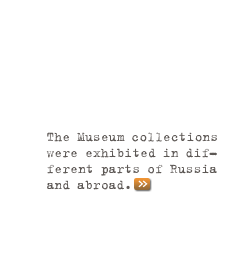Museum Collection
Wooden Utensils
Handmade wooden utensils occupied a special place among the various household items of Cossack life. To produce them the masters from many generations had used a cutter, an edze, a scraper, an axe and a knife for several centuries.
The stores of the Museum-Reserve of M.A.Sholokhov keep different kinds of wooden utensils of the late XIX–early XX centuries: salt-cellars, cups, dishes and spoons.
Cossacks decorated wooden salt-cellars with carvings and paintings, as salt and bread were of great respect and honour. In celebrations and weddings, bread and salt were always brought in. In the Don region salt-cellars of different forms were used: as a cubic box with a lifting lid, as a bowl with a lid, or a salt-box on a chiseled stem and a saucer, duck-form salt cellars and others.
Hemispherical cups without lids and with small saucers were generally used for drinks, but they were also used as dinnerware to dish up hot courses – shchi, soup, fish-soup and others.
Mostly popular was a round dish on the low saucer with narrow horizontal rims. It was used to serve pancakes, fish and pies. Flatter dishes were used for serving appetizers – cakes, sweet-stuff as well as for serving cups with drinks and bread-and-salt.
For cutting meat and fish Cossacks used round wooden plates.
Spoons of different kinds and sizes were made of wood by hollowing out. Cossacks used spoons with long handles to stir the cooking; short-handle spoons were used for eating meals; large spoons were used for putting meal into bowls.
When the lathe entered into practice it became possible to raise the productivity but it caused greater uniformity of the wooden utensils produced.
Late in the XIX century, china and crockery began gradually to displace wooden utensils in the Don region, but the wooden tableware handicraft was not forgotten. For instance, all the above mentioned household utensils are produced now in the Department of Applied Art of the National M.A.Sholokhov Museum-Reserve.
Nataliya Blagodarova









.jpg)
.jpg)
.jpg)
.jpg)
.jpg)
.jpg)
.jpg)
